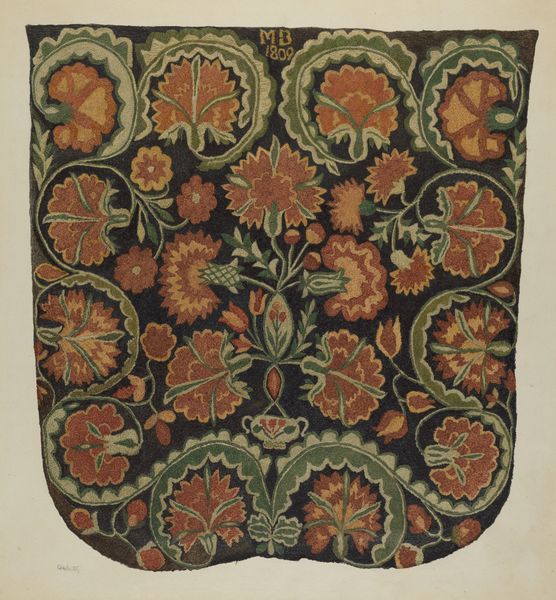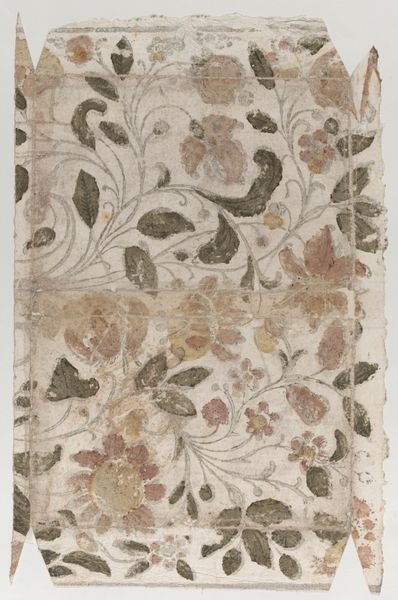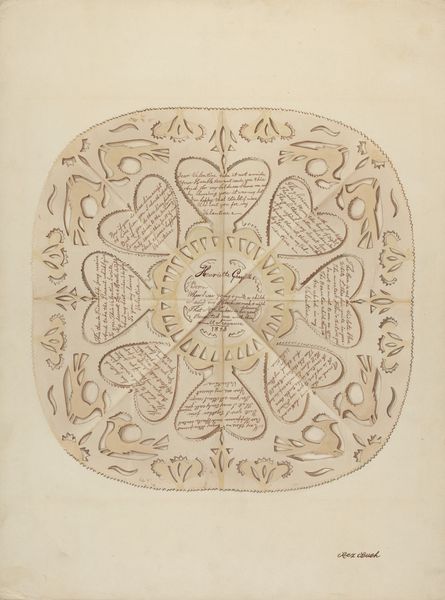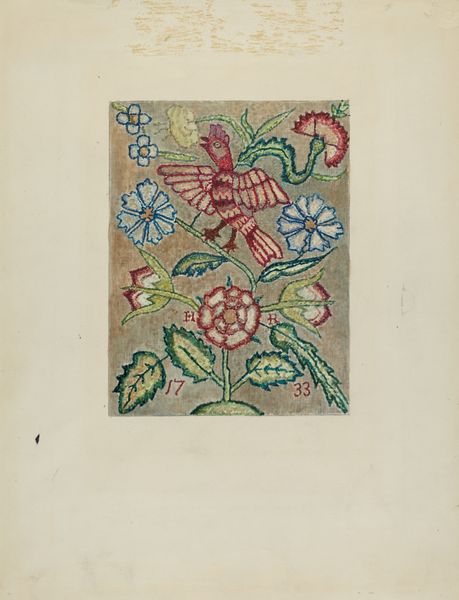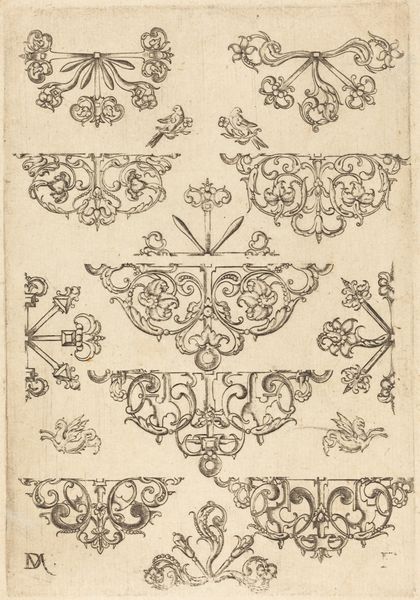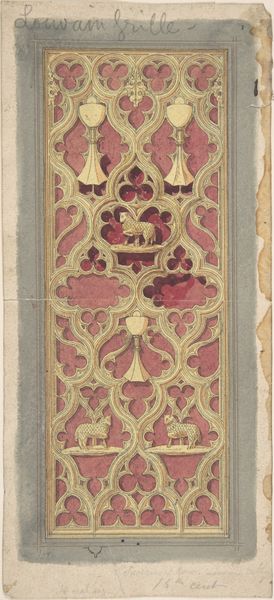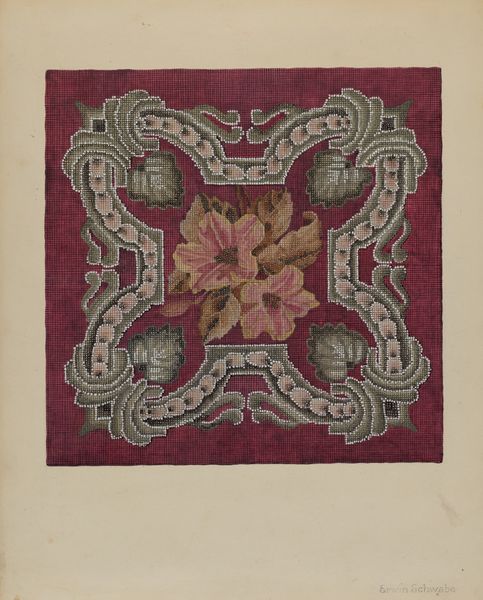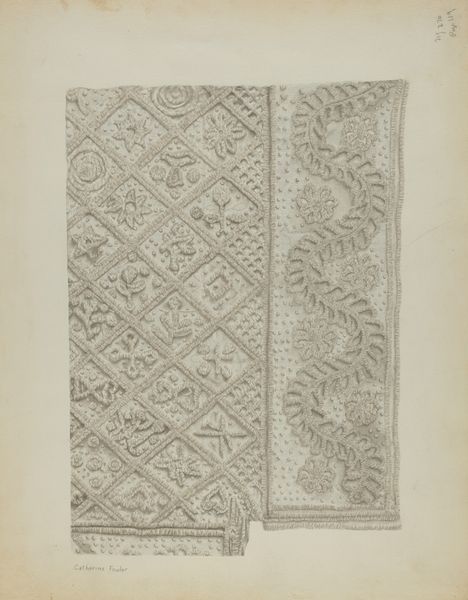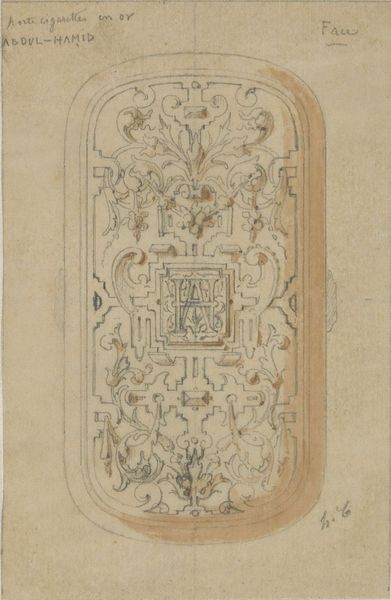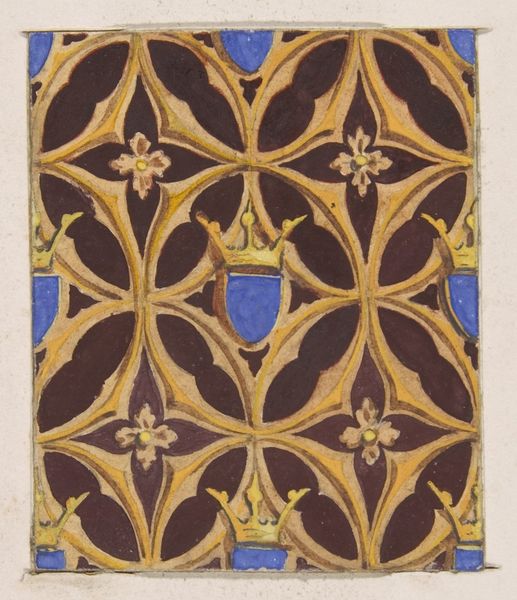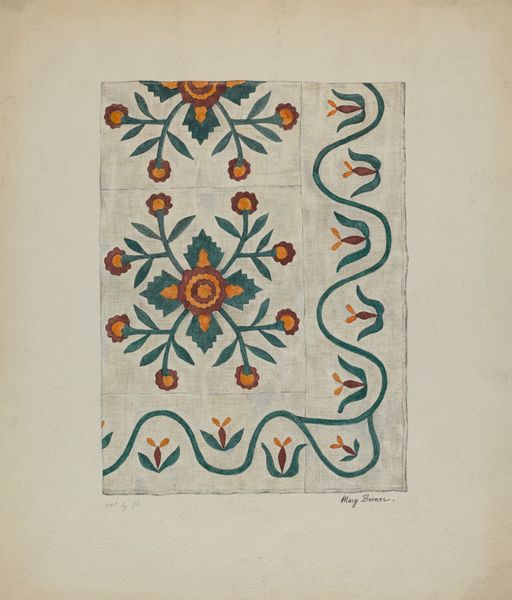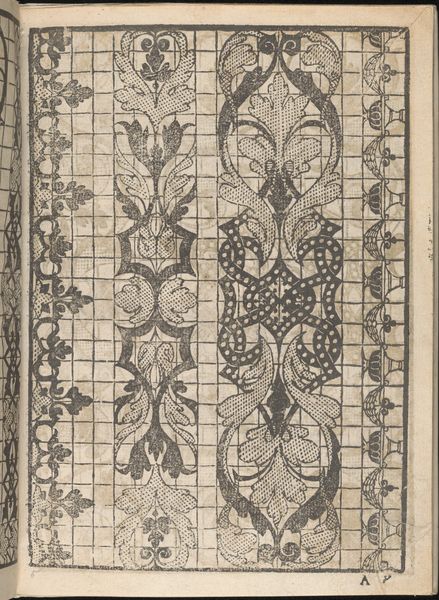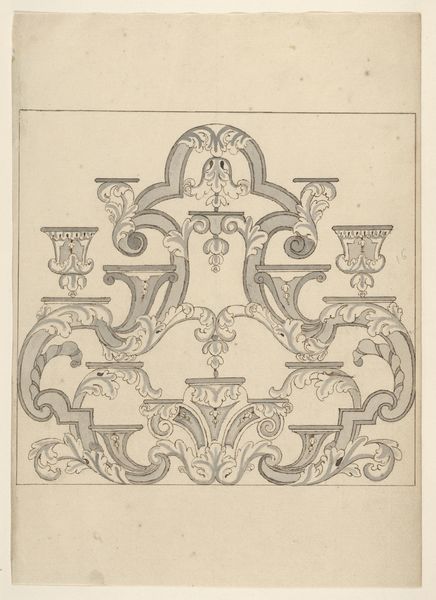
drawing, coloured-pencil, paper
#
drawing
#
coloured-pencil
#
paper
#
coloured pencil
Dimensions: overall: 44 x 37 cm (17 5/16 x 14 9/16 in.) Original IAD Object: 93 1/2" long; 92" wide
Copyright: National Gallery of Art: CC0 1.0
Curator: Looking at this piece, the first thing I notice is the density of the marks, creating texture and form. Editor: Yes, this drawing by Michael Trekur, simply titled "Bedspread," dates from around 1936 and really activates its own surface through the use of colored pencils. It's charming. I immediately get a feeling of domestic comfort, that it was maybe something treasured, a pattern to aspire to creating or recreating, or simply to document something already precious. Curator: The material rendering creates a tactile quality even within the flat plane. I find the process compelling – the sheer labor of recreating this bedspread with such meticulous detail using only colored pencils. How the labor mirrors the production of an actual textile. Editor: I'm intrigued by the fact that it is just the pattern; the rendering becomes a powerful statement of cultural expression in a period where such craft would've been largely gendered and perhaps undervalued as “women's work.” The detail involved is astonishing, it seems almost meditative. It prompts reflection on access, both to skills, education, and materials that weren't available equally across society in that era. Curator: Right. Thinking about craft traditions – who had access to them, who produced them, and what it meant in terms of skill and time, even personal identity—adds so much depth to what we see as mere “decoration.” There's also the practical side; this drawing preserves a design, a method perhaps, against the possible fragility of an actual textile object, it becomes almost a pattern blueprint. Editor: I couldn’t agree more. The act of choosing to draw this – instead of, or as preparation for creating the bedspread, elevates it. It invites considerations around representation of labor, preservation, craft and production, even love itself, into a single image, imbued with its own social narrative, Curator: Yes, it's as if Trekur gives the pattern both function and value. Editor: Ultimately it changes our understanding of art, prompting us to think how patterns can be radical acts of resistance, not simply a comfortable bedspread. Curator: Well, for me it enhances my curiosity about art production and craftwork. Editor: Exactly, so it adds depth, making something decorative equally profound.
Comments
No comments
Be the first to comment and join the conversation on the ultimate creative platform.
